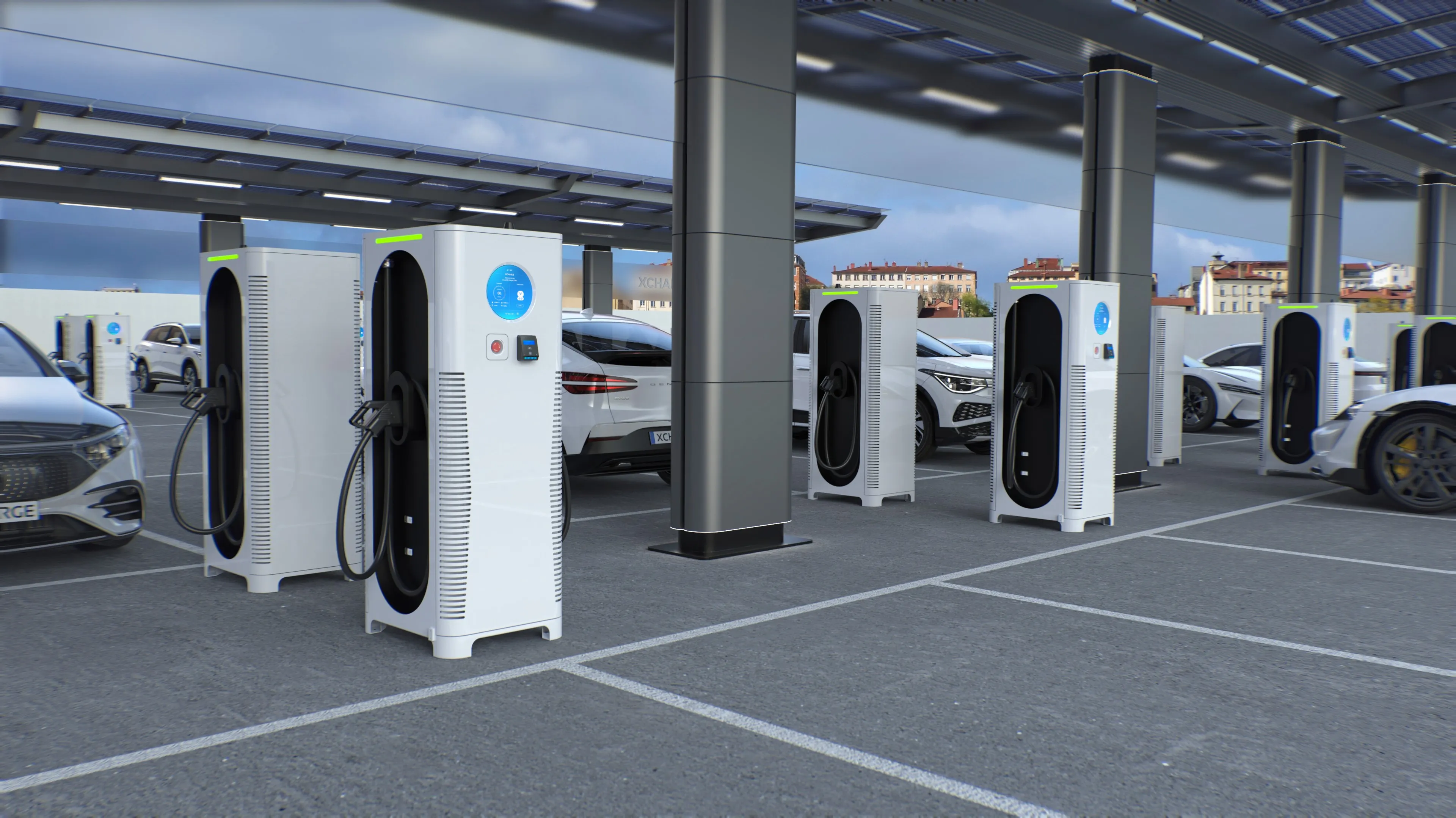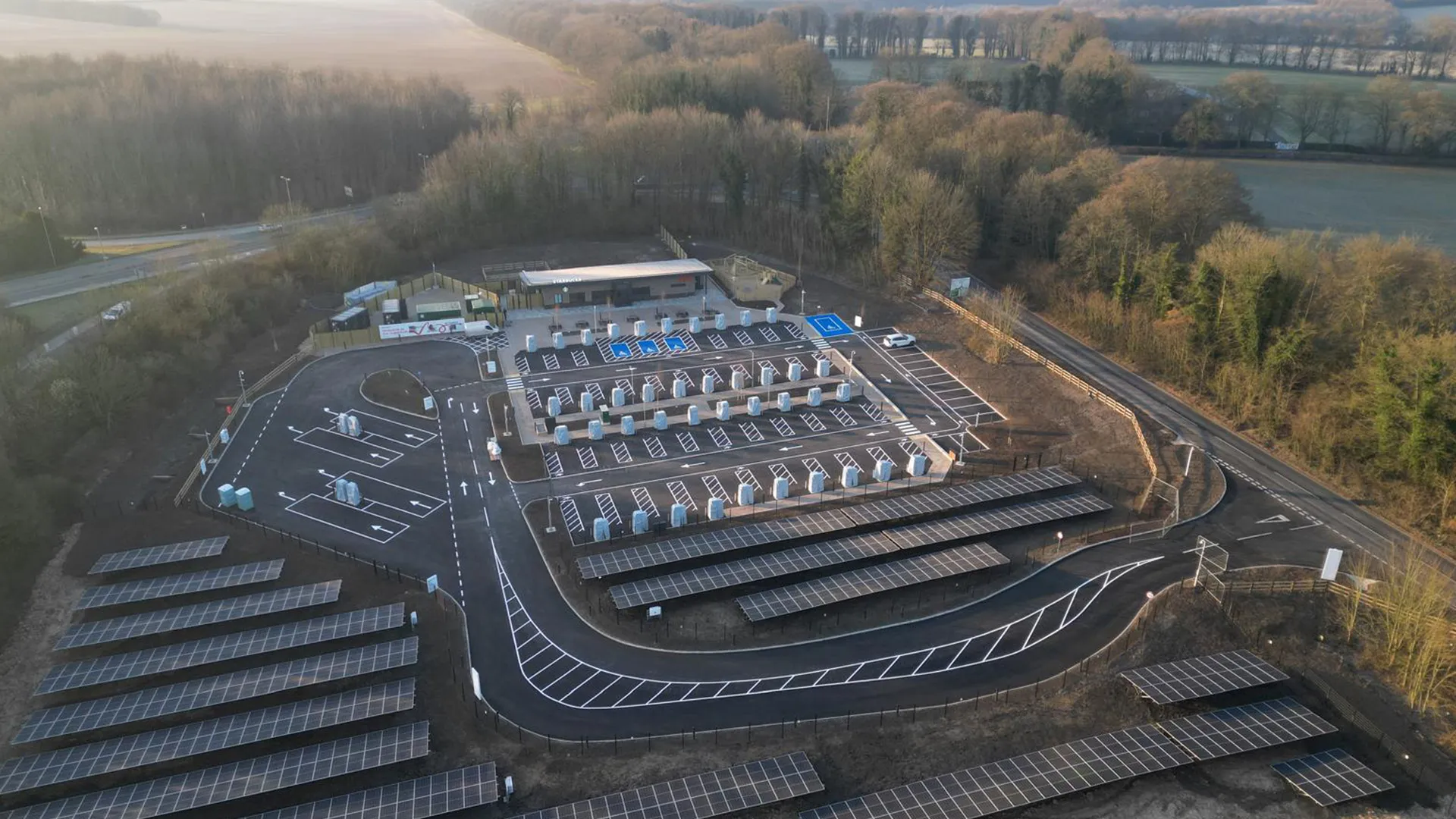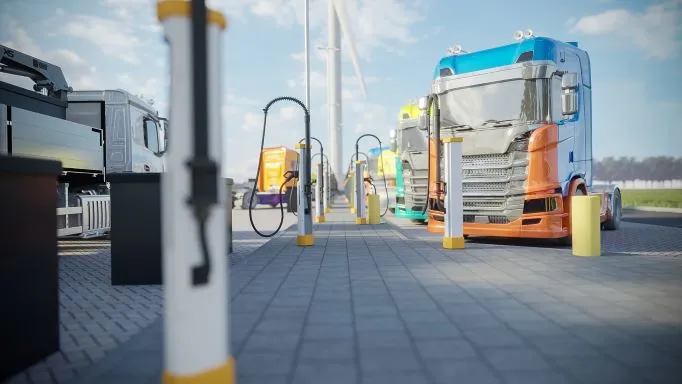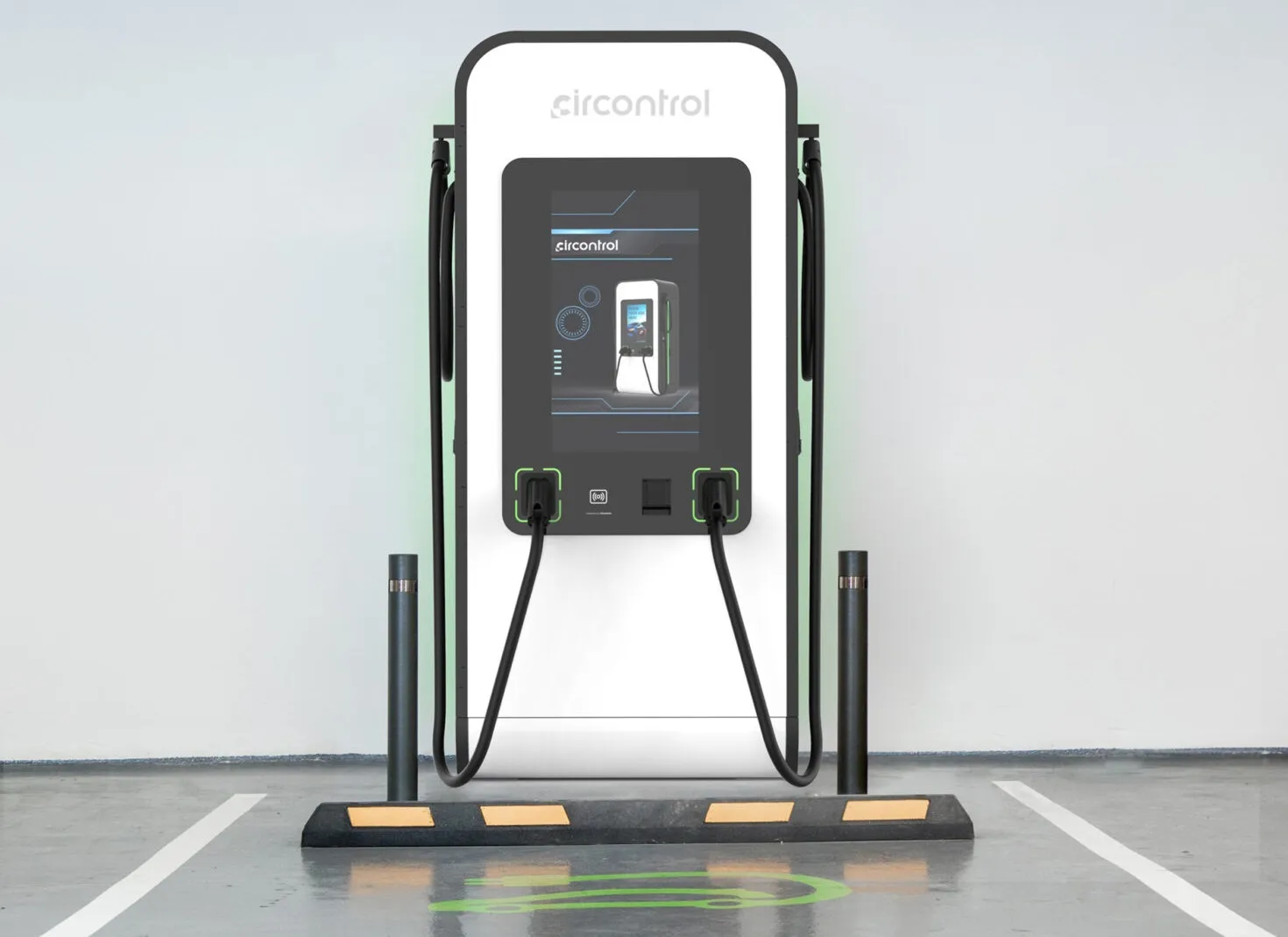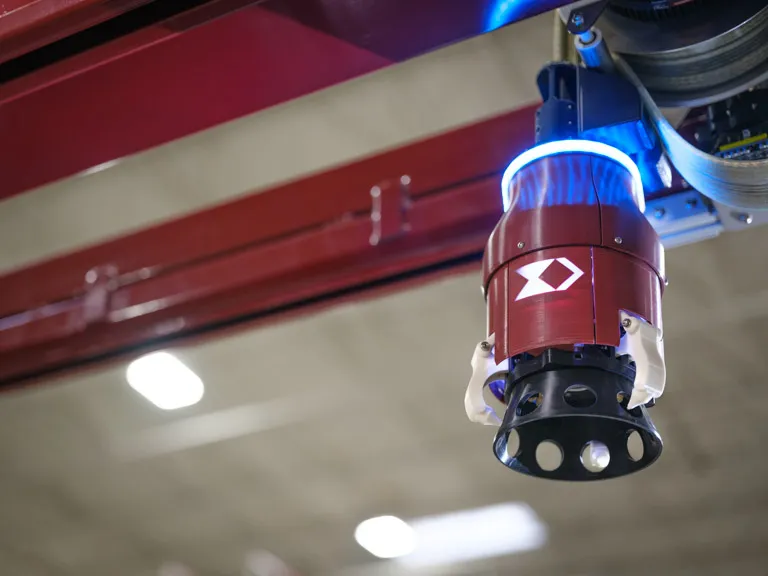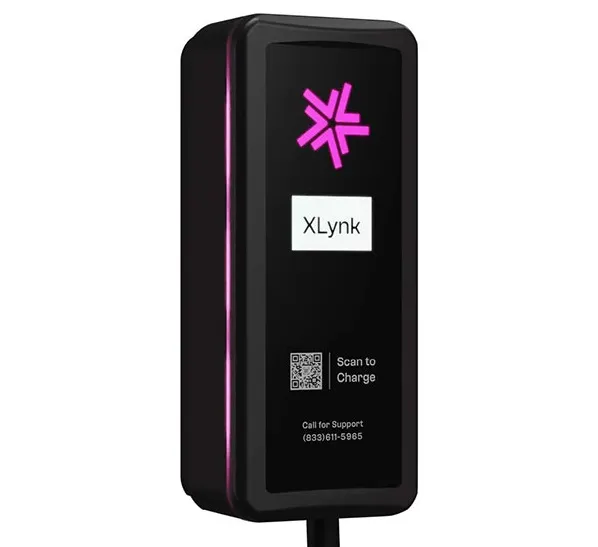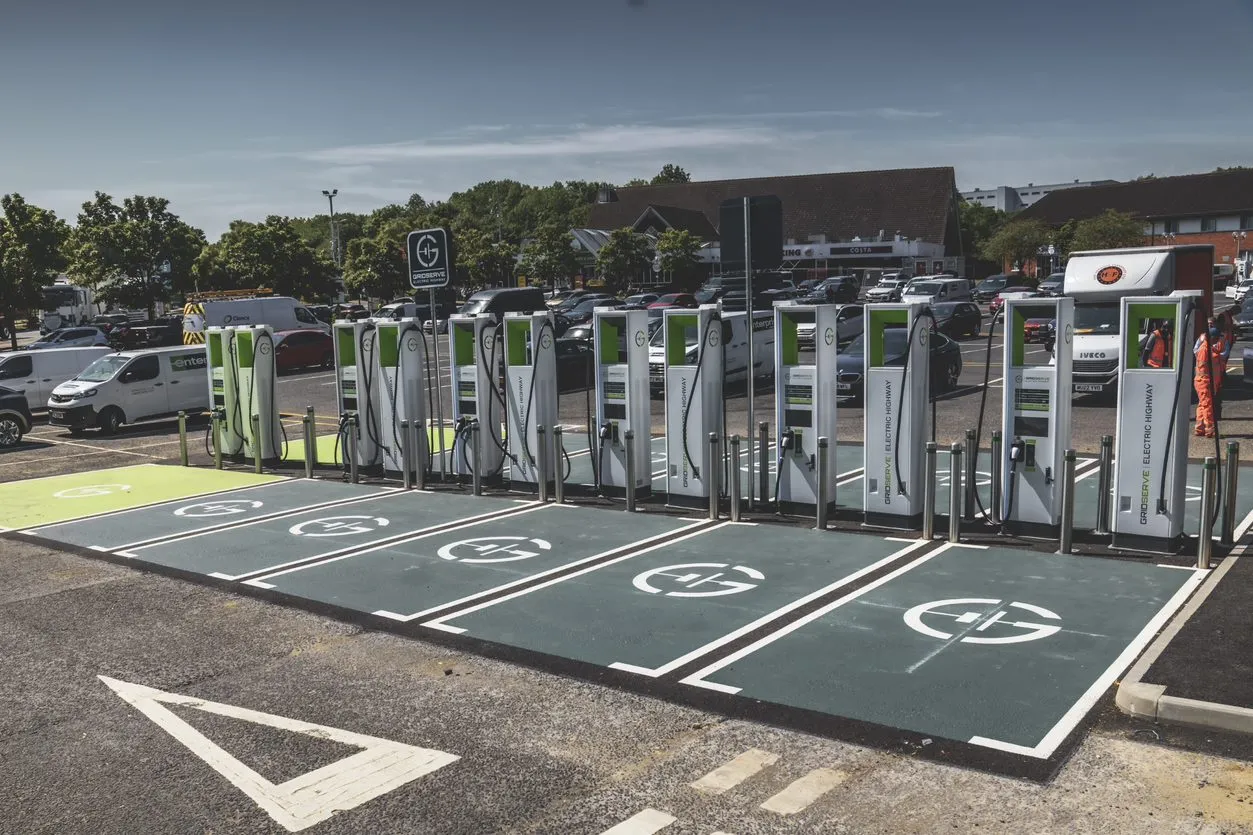
The microgrid, at Gridserve’s latest electric super hub at Moto Ferrybridge, near Knottingly in the north of England, is an innovative temporary solution to power the electric super hub, which will ultimately have 12 high power chargers once the permanent grid connection is in place.
The Moto site is strategically placed on the interchange of the M62/A1(M) in Yorkshire, accessible from both major roads in both directions. The microgrid has enabled Gridserve to bring six of the new chargers online now to support its customer charging needs at this location until the permanent grid connection comes online in a few months.
Getting new electric super hubs online often isn’t straightforward. Over the course of anywhere from six to 18 months, Gridserve works with landowners, adjacent business owners, local councils, contractors, and distribution network operators (DNOs) to energise new locations. Any delay at any stage, could postpone Gridserve delivering the new electric super hub, and over time this can have a knock-on effect on timelines for projects being energised. Once the chargers are in place and ready to go, Gridserve customers can experience an agonising wait for energisation. That is why the company is trialling this solution to accelerate the energisation timeframes.
The microgrid solution features a 150kW/150kWh battery pack, sourced from second-life car batteries, that controls the supply of power to the EV chargers and is supplied by vegetable oil generators, maximising overall efficiency, and reducing noise output. Vegetable oil generators produce 90% less carbon emissions than traditional generators, so in order to stay net zero, Gridserve is also planting trees to offset the remaining 10% carbon emissions this process is unable to remove.
As Toddington Harper, CEO at Gridserve points out, electric super hubs typically require new grid connections, which are outside of the company’s control and often take much longer to deliver than installing all the chargers. “As a result, we’ve been working through solutions to get chargers working as quickly as possible, and we are excited to trial this microgrid solution running on batteries and vegetable oil, as this has enabled us to get the chargers operating many months before the grid connection was available.” Admitting it’s not a perfect solution, Harper commented, “If there are people out there who have even better interim solutions that can be delivered within the timeframes we are working to, we would be delighted to hear from you.”



